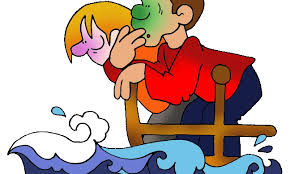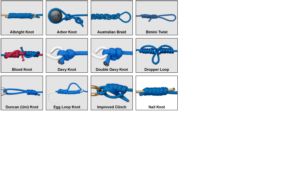General articles
{{start}}
{{end}}

{{+1}}Hobie Mirage Outback – review{{-1}}
{{start}}
I have owned a number of canoes and kayaks over the years and the Hobie Mirage Outback shown below is by far the best of that type of fishing platform I have experienced.{{end}}

{{+1}}“Mal de mer”, “sea sickness”, “motion sickness”{{-1}}
{{start}}
This is my approach to Mal de mer, sea sickness, motion sickness or whatever you want to call it. It is a terrible affliction and can spoil what may well have been a great fun day.{{end}}

{{+1}}Knots – Loop to loop connections – native fish{{-1}}
{{start}}
Using this process if I decided that I want to swap from my existing leader to one of my pre prepared leaders that is stored on a 'leader pad', complete with its fly or team of flies, all I need to forfeit is around one minute of my fishing time.{{end}}

{{+1}}Knots – Chatto’s 2 turn loop knot{{-1}}
{{start}}
This knot is very simple to tie and because of its figure eight configuration is relatively strong. It also has the advantage over the other many other loop knots in that the two parts of line coming out of the actual knot are next to each other so the actual open part of the loop can be as narrow as just the two thicknesses of line.{{end}}

{{+1}}Getting started – saltwater flies{{-1}}
{{start}}
- Getting started - dry trout flies
- Getting started - wet trout flies
- Getting started - bass and native fish flies
- Getting started - the gear
Salt water flies are flies that have been designed specifically for use in salt water to catch fish that live full time or part of their life cycle in salt water environments.
Wet flies.
By far the majority of salt water flies have been designed to be fished sub surface.
Blue water flies
Estuary flies
Specifically designed for use in estuarine environments these are just a very small random sample of flies specifically designed to be fish in river mouths, saline lakes and lagoons, sand flats and other estuary type environments.
Salt water dry flies
Designed to be fished on the surface
There are much fewer flies designed to be fished on the surface in salt water environment and these are just a couple of the key ones.
{{end}}
{{+1}}AFTMA fly line ratings{{-1}}
{{start}}
This post provides a schedule which shows what grains of weight matched up with the various AFTM line weights.{{end}}
{{+1}}Rock hopping -safety first{{-1}}
{{start}}
In recent years there has been a number of fatalities off the rocks and this article has only one purpose and that is to remind people that its easy to overestimate your own ability and equally easy to underestimate the forces of nature that may be working against you.{{end}}

{{+1}}Aspects of lake craft{{-1}}
{{start}}
Reading a lake or impoundment is no less important to the successful fly fisher than reading a stream or river. Lakes and impoundments are not just big volumes of homogeneous water denuded of any structure even though at first glance that may be how they seem.{{end}}

{{+1}}My favorite 8 knots{{-1}}
{{start}}
Just behind poor fishing technique and inept netting technique the most prolific reason for fish being lost is a problem with a knot. There are more knots than you can poke a stick at that can be used in fly fishing and over time you will settle on a few that you tie well and have confidence in. Over the years I have tried a lot of different knots and currently I have settled on the following 6 knots.{{end}}




























